Toyota 4Runner Model History: A Comprehensive Timeline
What makes the Toyota 4Runner such a beloved icon? Since its debut in the mid-1980s, the 4Runner has been synonymous with rugged durability and adventure-ready capabilities. Picture a vehicle that not only takes you to your destination but becomes a part of your adventure story.
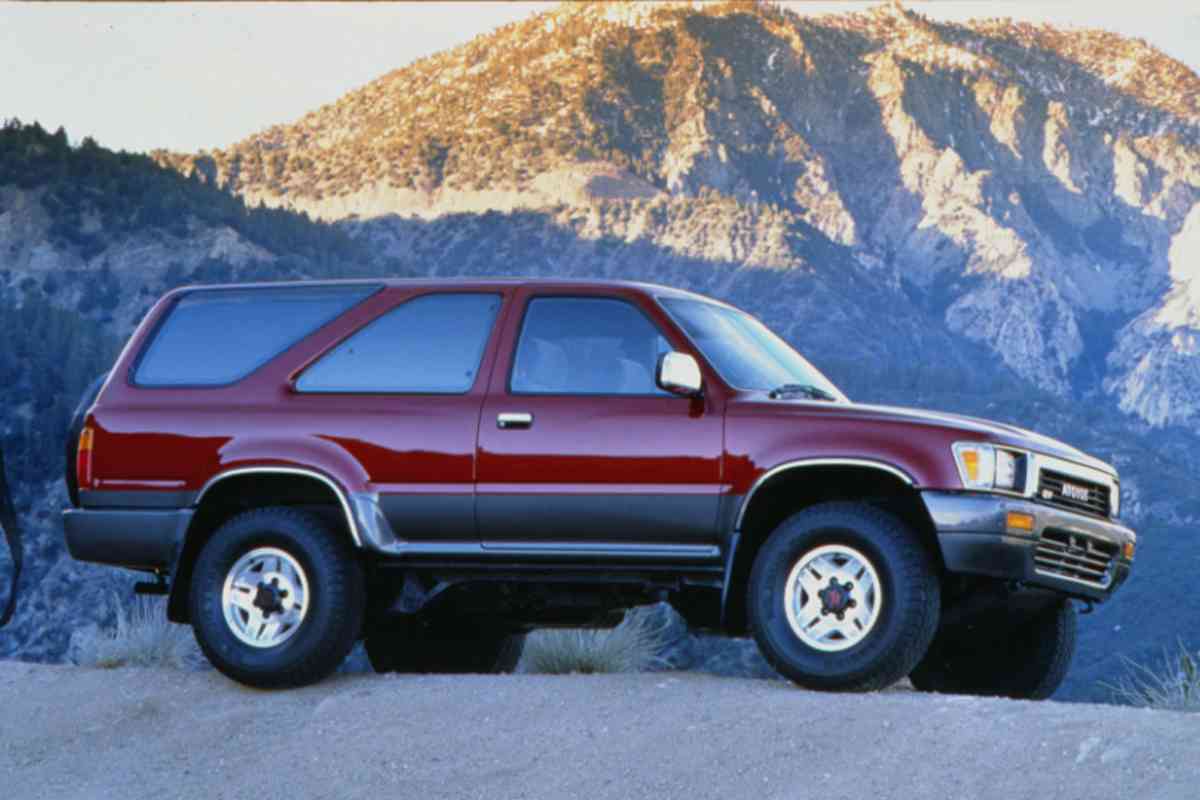
Related Post! What Generation Is My 4Runner?
What’s The History Of The 4Runner?
The Toyota 4Runner, launched in the mid-1980s, has evolved through five generations, maintaining its reputation for rugged durability and off-road prowess. Originating from the Toyota Hilux, it transitioned from a utilitarian vehicle to a versatile SUV, balancing modern comforts with its adventure-centric heritage, appealing to both enthusiasts and daily drivers.
Through its five generations, the 4Runner has masterfully balanced innovation and tradition. It’s not just an SUV; it’s a testament to Toyota’s dedication to quality and utility. Whether you’re an off-road enthusiast or an everyday driver, there’s something in the 4Runner that speaks to everyone.
In today’s market, the 4Runner stands out with its unique mix of comfort, technology, and safety. It’s a vehicle that effortlessly transitions from urban landscapes to rugged trails. This versatility is a nod to Toyota’s deep understanding of what you, the driver, seek in an adventure vehicle.
Key Takeaways
- The Toyota 4Runner is renowned for its off-road capability and body-on-frame construction.
- It has evolved over five generations, striking a balance between modern demands and its adventure-centric heritage.
- The current 4Runner models are designed to meet a variety of needs, merging performance with everyday functionality.
Early Beginnings and First Generation (1984-1989)
The journey of the 4Runner began in the mid-1980s, transitioning from the utilitarian Toyota Trekker to the more refined, yet equally rugged, first-generation 4Runner.
Origin and Overview
Born from the success of the Toyota Hilux pickup, the 4Runner’s story is one of evolution and innovation. The collaboration with Winnebago transformed the Hilux into the Toyota Trekker, paving Toyota’s path into the SUV market. In 1984, the N60 4Runner emerged, focusing on both utility and passenger comfort.
1984-1989 Model Features
Your first-generation 4Runner, spanning from 1984 to 1989, was a game-changer with its removable fiberglass shell – a feature that offered versatility and a hint of open-air freedom. Under the hood, it boasted a 2.4L 22RE four-cylinder engine, renowned for its reliability and efficiency. Initially favoring rear-wheel drive, the 4Runner gradually embraced four-wheel drive, enhancing its off-road credentials.
The interior was straightforward yet functional, aligning with the vehicle’s utilitarian spirit. These early 4Runners were built for those who sought adventure and off-road capability, without compromising on-road performance.
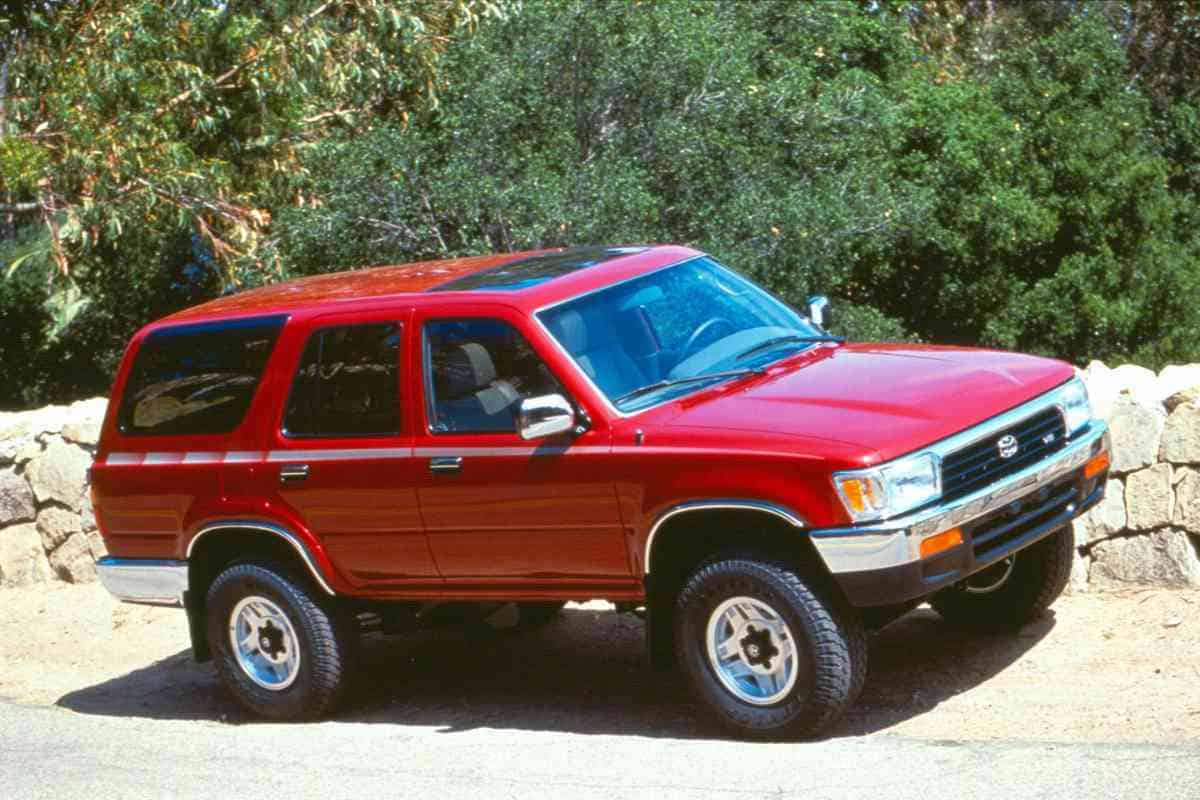
Second Generation (1990-1995)
In August 1989, the second-generation 4Runner debuted, showcasing significant advancements in design, power, and capability. This era introduced a more aerodynamic body-on-frame construction and marked a shift in performance with new engine introductions.
New Features and Enhancements
This generation of the 4Runner moved away from the solid front axle, opting for an independent suspension for improved ride quality. Inside, you’ll find a leap in comfort and sophistication, with features like:
- An improved rear hatch with a roll-down window
- Upgraded interior trim options, especially in the SR5 model
Engine and Drivetrain Upgrades
Under the hood, the 4Runner saw significant changes:
- Initially, a 2.4L four-cylinder engine was used, later replaced by a more robust 2.7L version.
- The introduction of a new 3.0L V6 engine enhanced performance and towing capabilities, perfect for off-road adventures.
- Choose between a five-speed manual or four-speed automatic transmission to match your driving style.
Third Generation (1996-2002)
Balancing Off-Road Prowess with Everyday Comfort
The third-generation 4Runner, spanning 1996 to 2002, marked a period of remarkable design and engineering strides. This era saw the 4Runner mature into a vehicle that perfectly balanced off-road capability with everyday usability.
Design Evolution
This generation introduced a more rigid chassis for enhanced stability and ride quality. The design shifted to more refined, rounded contours, and a new coil spring suspension system improved handling. Inside, the SR5 and Limited trims offered unprecedented luxury and technology.
Performance and Reliability
- The 4Runner was equipped with a robust 3.4-liter V6 engine, offering commendable power and efficiency.
- Available in both four-speed automatic and five-speed manual transmissions.
- Four-wheel drive with a locking rear differential was introduced for superior off-road capability.
- Note: Some models had head gasket issues, but overall, this generation is celebrated for its durability.
Fourth Generation (2003-2009)
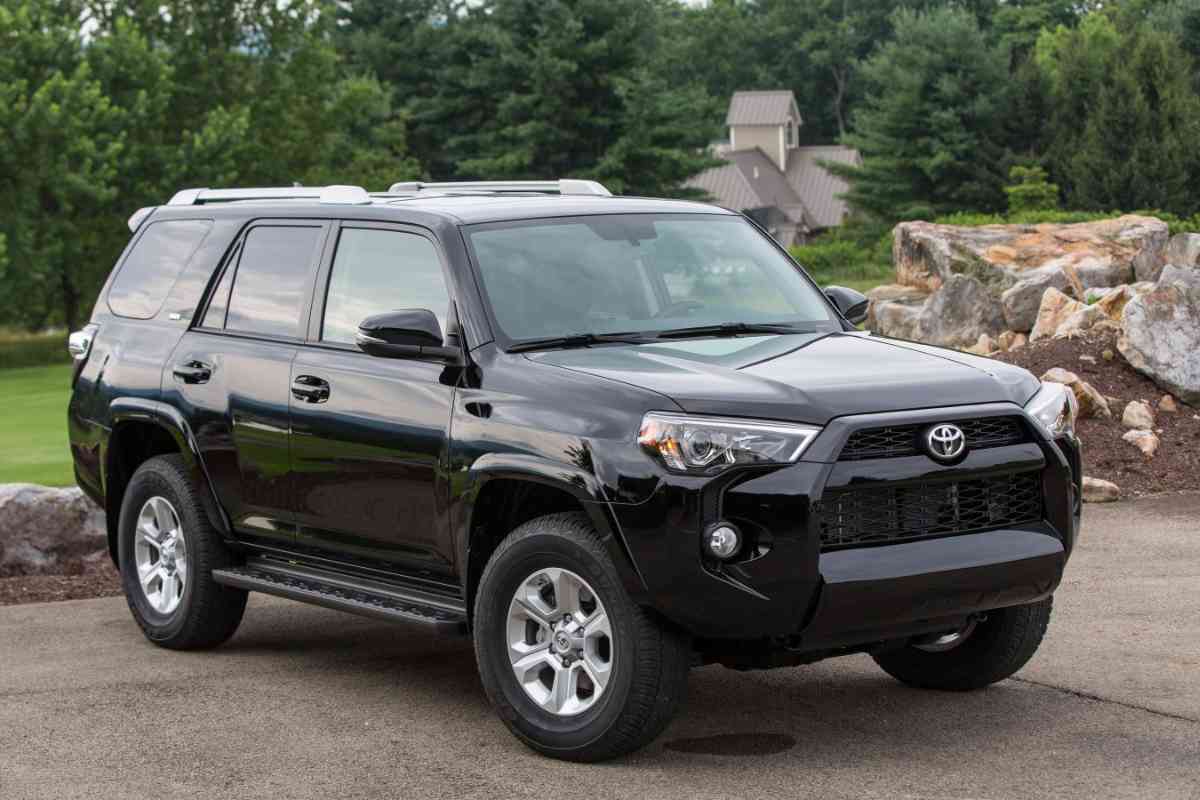
Power Boost and Enhanced Interiors
The fourth-generation 4Runner, running from 2003 to 2009, embraced significant power upgrades and interior enhancements.
Introduction of V8 Engine
- A powerful 4.7L V8 engine was introduced, providing a significant performance boost, ideal for towing and off-road use.
Advancements in Comfort and Technology
- The focus on comfort was evident with improved climate control systems and suspension.
- The SR5 and Limited models received upgrades in luxury and technology.
- A new 4.0L V6 engine balanced efficiency and performance for standard models.
Fifth Generation (2010-Present)
Rugged Design Meets Modern Technology
The fifth-generation 4Runner, introduced in 2010, continues the legacy with a rugged design and enhanced off-road capabilities, powered by a strong V6 engine.
Modern Design and Enhanced Features
- The exterior features aggressive styling with a redesigned grille.
- The interior offers a comfortable, tech-forward environment.
- A 4.0-liter V6 engine provides a mix of performance and efficiency.
Off-Roading and Special Editions
For off-road enthusiasts, the TRD Pro and Trail editions are tailor-made:
- Crawl Control and Multi-Terrain Select adapt the vehicle for various trail conditions.
- The Trail Special Edition focuses on additional storage and durability.
- These features ensure confidence and capability in every off-road adventure.
Design and Style
As you lay eyes on the Toyota 4Runner, its bold and assertive grille immediately signals its readiness for challenging terrains. The vehicle’s traditional body-on-frame construction gives it a silhouette that’s both strong and utilitarian. Its exterior, with purposeful rounded contours, strikes a perfect balance between aerodynamic efficiency and a timeless look that epitomizes endurance.
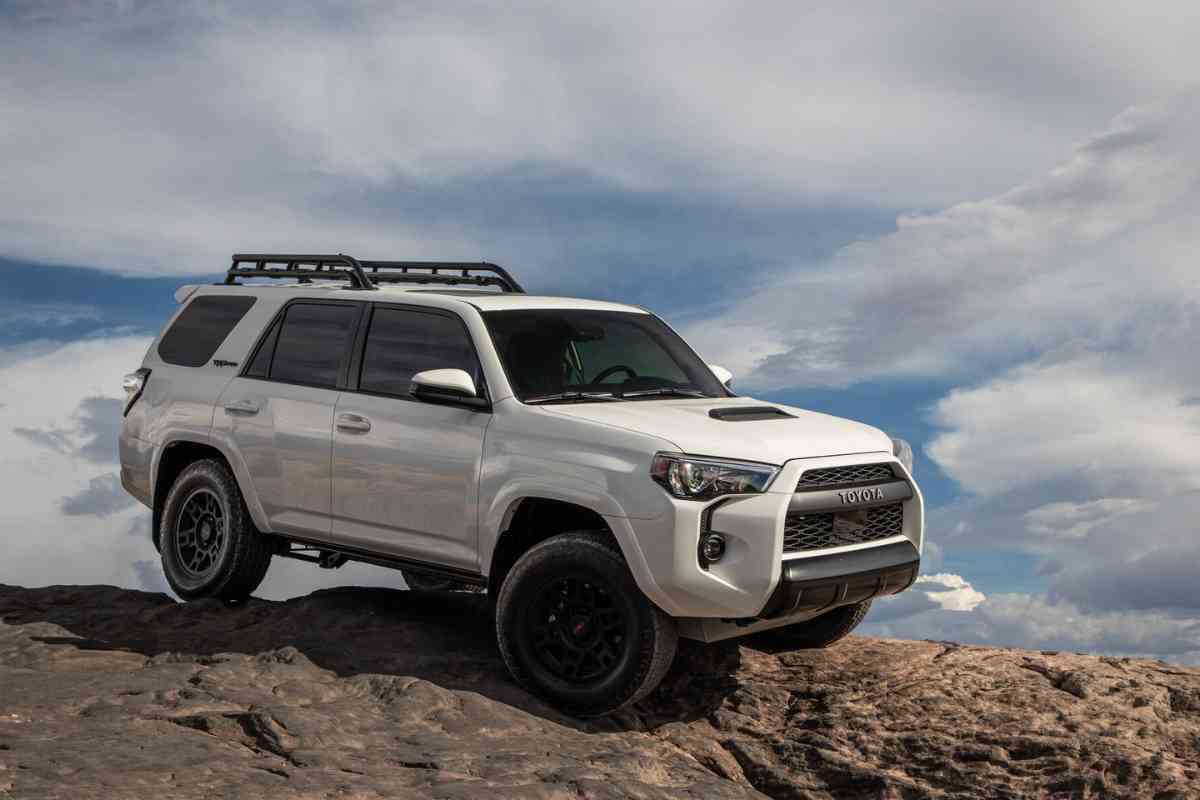
Interior Comfort and Amenities
Step into the 4Runner, and you’re greeted by an interior that’s as ready for adventure as it is for your daily commute. The cabin is a haven of comfort, featuring:
- Climate control for a consistently pleasant atmosphere.
- Multiple USB ports for convenient device charging.
- A sunroof offering expansive views or an open-air experience.
- Spacious and supportive seating, complemented by modern conveniences like a backup camera.
Performance and Capabilities: Power and Precision
The Toyota 4Runner excels with its robust engine options and advanced drive systems, ensuring a balance of on-road comfort and off-road capability.
Engine and Transmission
- The heart of the 4Runner is its engine, with earlier models featuring a V6 for a mix of power and efficiency.
- Selected models, particularly in the 4th generation, offered a 4.7-liter V8 for greater towing capacity.
- Transmission systems evolved from a 4-speed automatic to a more refined 5-speed electronically controlled automatic.
Suspension and Drive Systems
- The 4Runner’s suspension system, including standard coil springs and rugged shock absorbers, underpins its off-road prowess.
- TRD Pro models feature TRD-tuned front springs and high-performance Fox shock absorbers.
- 4WD options range from part-time to full-time in upper trims, enhancing the vehicle’s trail capabilities.
Safety and Technology: Innovations for a Secure Journey
The Toyota 4Runner has consistently integrated advancements in safety and technology, ensuring a secure and connected driving experience.
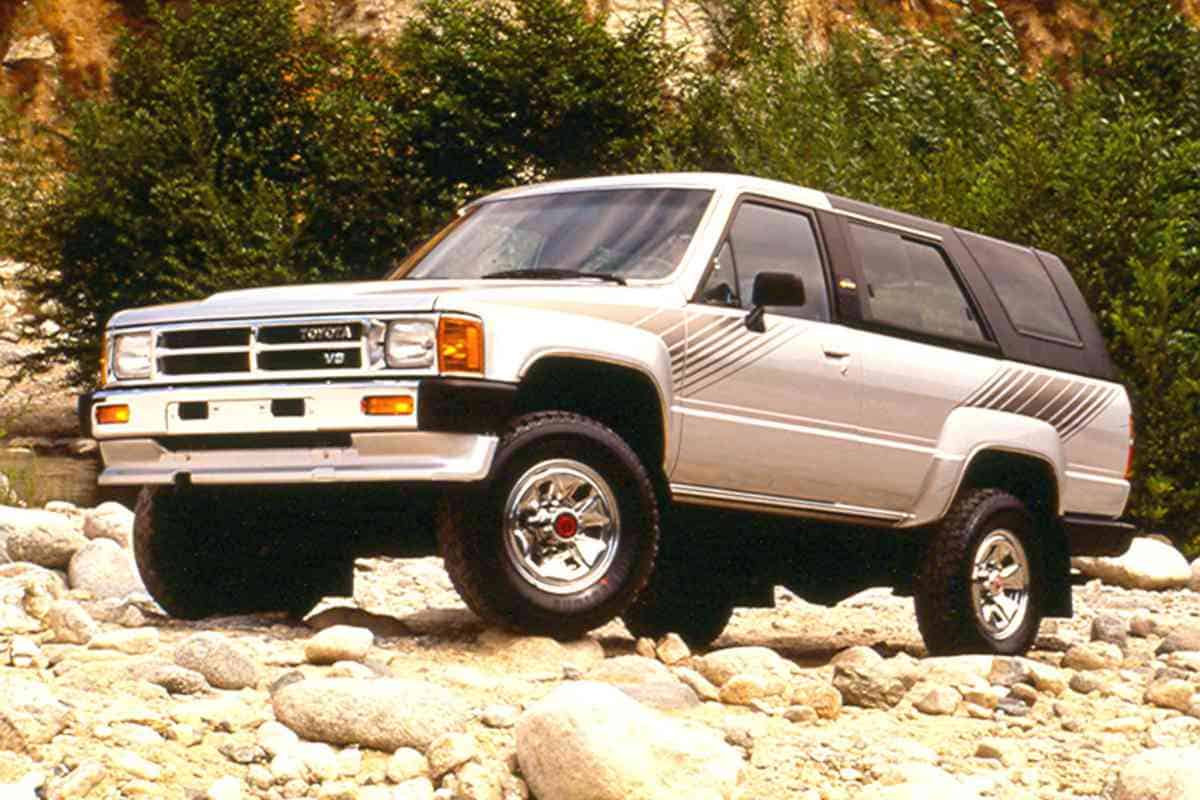
Innovations in Safety
- From anti-lock brakes in earlier models to advanced suspension systems in the TRD Pro trims, safety has always been paramount.
- Features like Electronic Stability Control (ESC) have significantly reduced crash risks.
- Modern 4Runners include lane departure alerts, automatic high beams, and standard backup cameras.
Connectivity and Navigation
- The 4Runner’s instrument cluster is a hub of technological progress, especially from the fifth generation onwards.
- Features include integrated climate control, Bluetooth connectivity, and an infotainment system with GPS navigation.
- TRD Pro trims offer Crawl Control and Multi-Terrain Select, easily managed through a central console.
Trim Levels and Packages
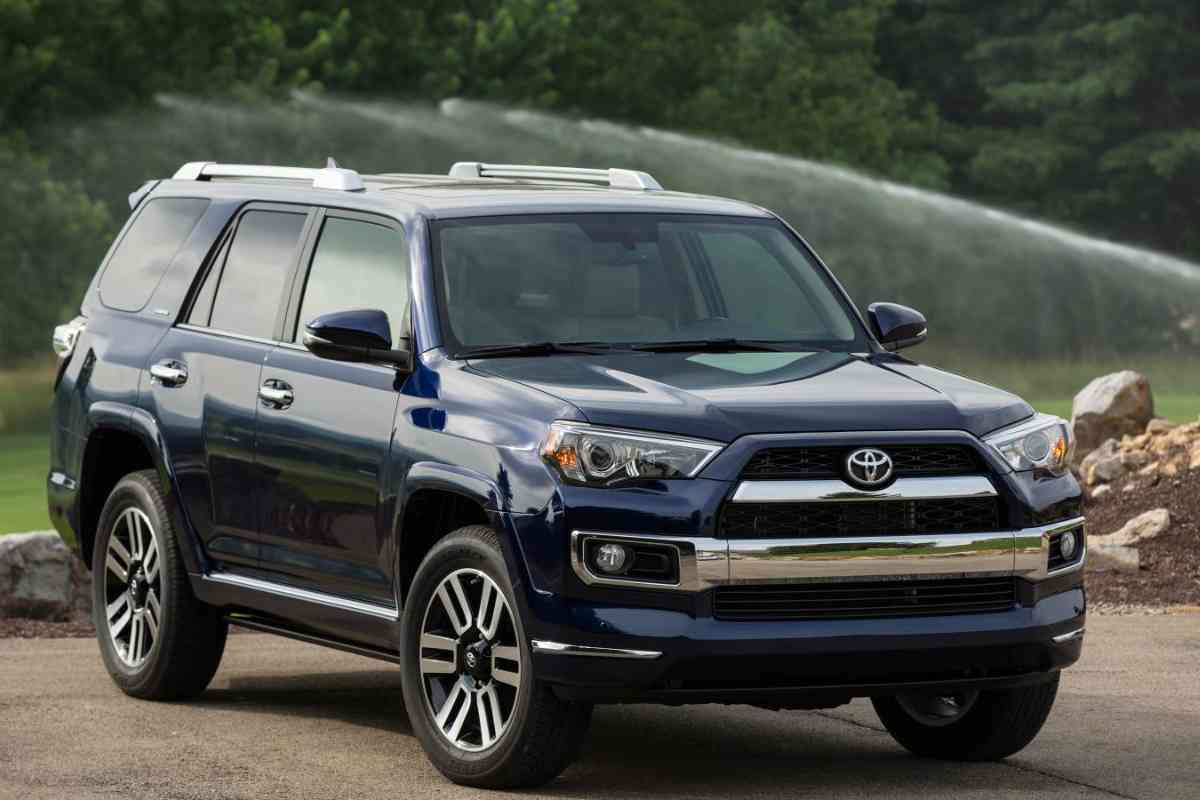
From Base to Premium: A Range of Choices
The Toyota 4Runner offers a variety of trims, each tailored to different needs and preferences. Whether you’re looking for basic utility or premium comfort, there’s a 4Runner for you.
- SR5: This entry-level trim provides a solid foundation, equipped with essential features for capability and comfort.
- SR5 Premium: A step up, this trim adds luxury touches like heated seats and navigation, enhancing your driving experience.
- Limited: For those seeking top-tier refinement, the Limited trim offers plush interiors, leather upholstery, and dual-zone climate control, epitomizing luxury in an SUV.
Off-Road and Special Edition Trims
For the off-road adventurers, the 4Runner has specialized trims designed to conquer rugged terrains:
- TRD Off-Road/Trail Premium: Tailored for enhanced off-road capability, this trim is perfect for trail enthusiasts.
- TRD Pro: The pinnacle of off-road trims, equipped with specialized equipment for the most challenging terrains.
- TRD Sport: A unique blend of sporty styling and off-road features, offering a dynamic driving experience.
- 40th Anniversary Special Edition: Celebrating heritage with exclusive styling and limited-run features, this edition is a nod to the 4Runner’s legacy.
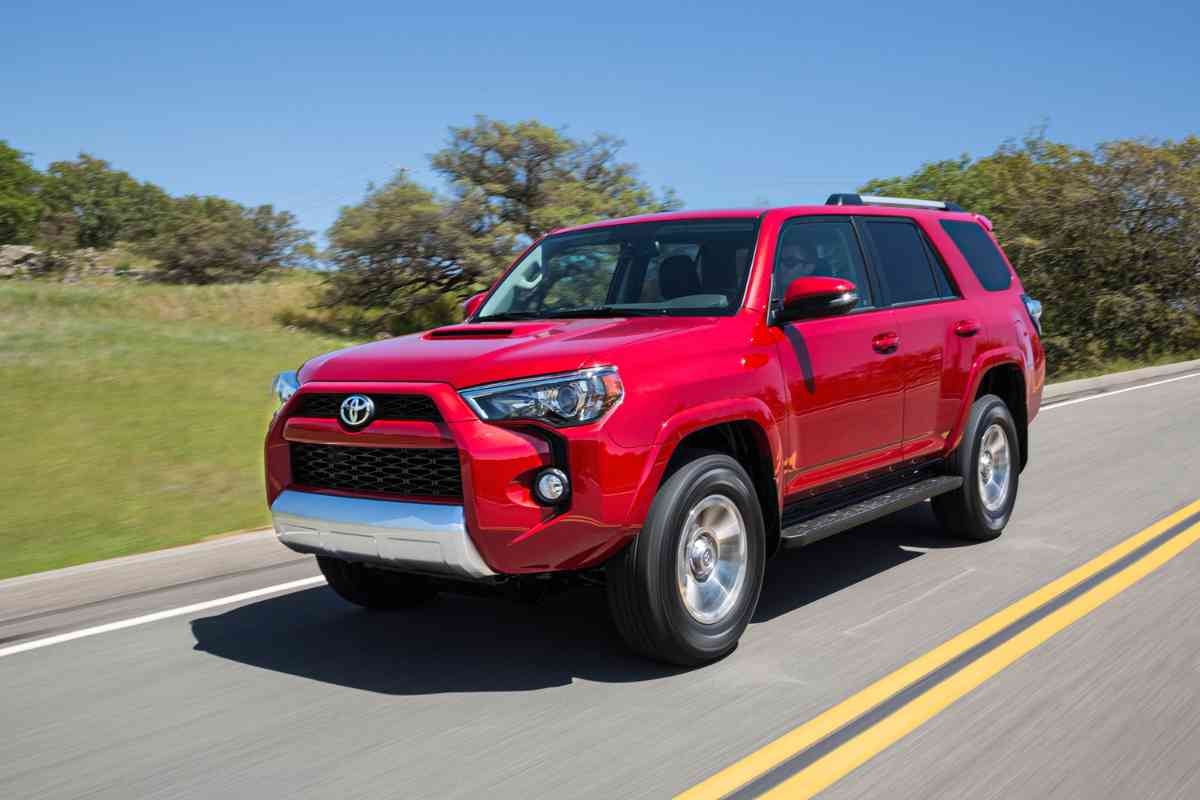
The 4Runner Ownership Experience
Owning a Toyota 4Runner means more than just driving an SUV; it’s about embracing a lifestyle rich in adventure and reliability.
Reliability and Maintenance
Your 4Runner is built to endure, with a focus on robust engineering:
- Engine Maintenance: Regular oil changes and belt checks are crucial for maintaining the engine’s performance.
- Off-Road Gear Care: If you frequently take the off-beaten path, keep a close eye on the suspension and 4WD systems.
Community and Aftermarket Support
In the U.S., the 4Runner enjoys a vibrant community and extensive aftermarket support:
- Forums and Clubs: These platforms offer a space for enthusiasts to share experiences, advice, and trail recommendations.
- Parts and Accessories: The aftermarket is rich with options to customize your 4Runner, enhancing its performance, aesthetics, and utility.
Owning a Toyota 4Runner is about joining a legacy that’s as adventurous as it is dependable. It’s not just an SUV; it’s a gateway to a community where every path leads to discovery.
Frequently Asked Questions
The Toyota 4Runner is a highly-regarded SUV with a rich history. This section will answer common questions about its generations, design changes, and features to enhance your understanding.
What are the distinguishing features of each Toyota 4Runner generation?
Each generation of the Toyota 4Runner showcases unique features. From the rugged simplicity of the first generation to the advanced technology of the fifth, every model has evolved to meet changing consumer demands.
Which year marked significant design changes in the Toyota 4Runner lineup?
The year 2010 marked a major redesign for the Toyota 4Runner, transitioning into its fifth generation with a more robust frame, enhanced off-road capabilities, and a more refined interior.
What is considered the best year for the Toyota 4Runner in terms of reliability and features?
Many consider the 2013 model year as one of the best for the Toyota 4Runner, providing a balance of reliability, comfort, and features without the much more recent design changes.
How many generations of the Toyota 4Runner have been released to date?
As of now, there have been five generations of the Toyota 4Runner released, each reflecting improvements and evolutions in style, performance, and technology.
What improvements were introduced in the 5th generation 4Runner compared to earlier models?
The 5th generation 4Runner, introduced in 2010, brought a sturdier body-on-frame construction, increased off-road technology, improved interior quality, and more safety features.
Can you highlight the differences between the 4th and 5th generation 4Runners?
The transition from the 4th to the 5th generation 4Runner included a more aggressive exterior design, the introduction of a more powerful 4.0L V6 engine, and enhanced multimedia options.
